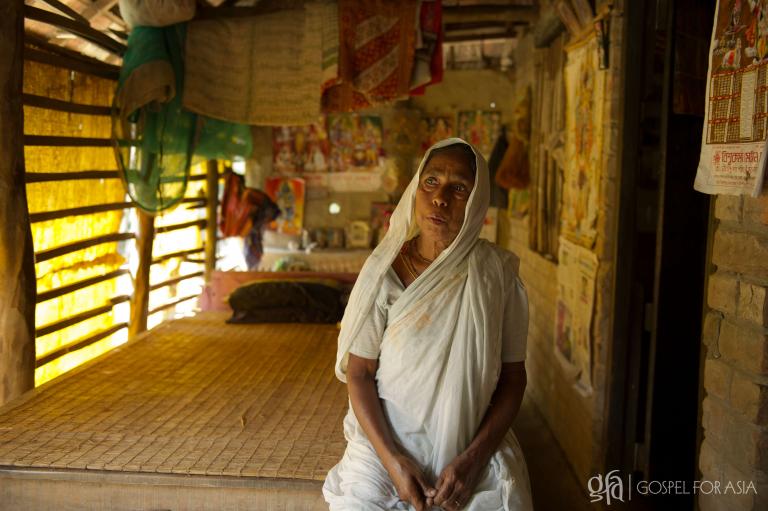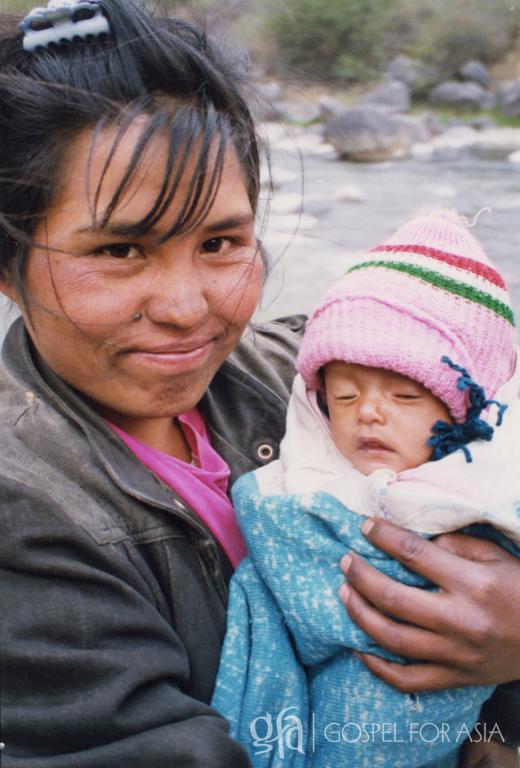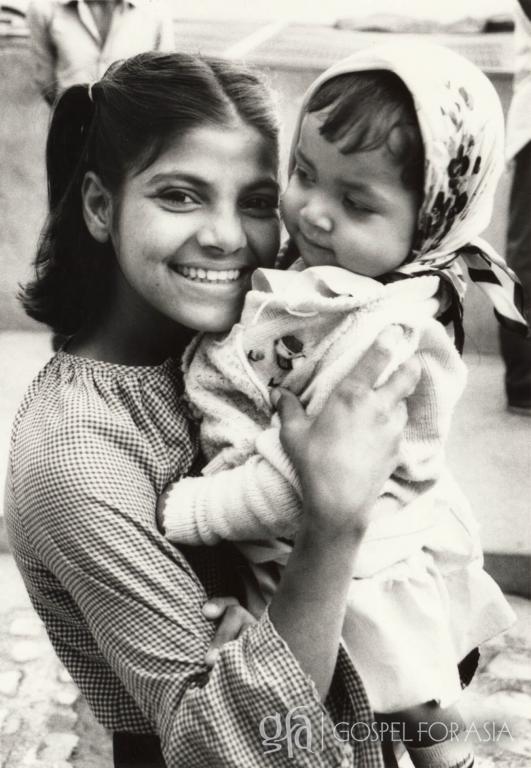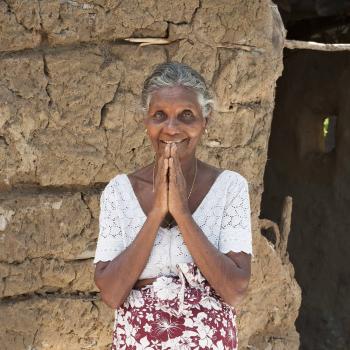
Wills Point, Texas – GFA (Gospel for Asia) – Use Mother’s Day to Honor Remarkable Moms & Educate Needy Girls
I have this gnawing intuition that Mother’s Day might be utilized as a day to contribute positively and substantively to the plight of women worldwide.
Originally, in fact, Mother’s Day was organized for just such a purpose. Started in 1908 by Anna Jarvis to honor her mother, Ann Reeves Jarvis, the daughter wanted to continue the work her mother had started.
I have this gnawing intuition that Mother’s Day might be utilized as a day to contribute positively and substantively to the plight of women worldwide.
Ann Reeves Jarvis had been a peace activist who cared for wounded soldiers on both sides of the Civil War. She had also created Mother’s Day Work Clubs to address public health issues and to teach local woman how to properly care for their children. In 1868, Ann Reeves Jarvis organized “Mothers’ Friendship Day,” where mothers gathered intentionally with former Union and Confederate soldiers to promote reconciliation.
In 1870, Julia Ward Howe, the abolitionist and suffragette, wrote the “Mother’s Day Proclamation,” which asked mothers to unite together in promoting world peace. Anna Jarvis, the daughter, was appalled by the eventual commercialization of her original idea of Mother’s Day, which Woodrow Wilson proclaimed a national holiday in 1914 by presidential proclamation.
In May of 1968, Coretta Scott King, the wife of Martin Luther King Jr., hosted a march on Mother’s Day in support of underprivileged women and children. Incredibly, she did this one month after her husband, Dr. Martin Luther King, was assassinated in April of that year.
I think we can safely assess that the original intents for Mother’s Day were to honor our individual mothers in some way but to also leverage the day into meaningful altruistic enterprises.
Certainly, there must be a portion of that $23,000,600,000 that retailers wouldn’t mind sharing in order to prevent the swelling demographic of 100,000,000 or so missing women. I wonder if we could possibly redirect our attention (or at least part of it) on this day to honor the remarkable mothers of the world, those who despite untold and unbelievable circumstances have survived.
I get frustrated when I am inconvenienced if the electricity in my house goes out after a storm (and which the electric company soon fixes even if I don’t make a phone call of complaint). I do not have to plod across enemy lines in war-torn territory while balancing a small bundle of possessions on my head, cradling a nursing infant in my arms and dragging two other frightened and weary children by my side. I do not have to cook inside a hut where the smoke fills my lungs and brings on chronic pulmonary distress. These are inconveniences.
I think we can safely assess that the original intents for Mother’s Day were to honor our individual mothers in some way but to also leverage the day into meaningful altruistic enterprises.
Let’s see if we can’t discover ways to honor the truly remarkable moms and mothers of the world—those who scrape gardens out of depleted soil, spend hours a day hauling water, eat whatever meal remains after the men have left the table, find ways to keep clean and to organize their living spaces, put up with abusive mothers-in-law (with whom many are forced to live with), find the energy despite their own disabilities to raise children with love, insist that their daughters as well as their sons attend school to receive at least a modicum of education, and find ways to supplement their subsistence incomes.
There are an estimated 350,000 Protestant churches in the United States. (I know because our ministry used to send direct mail to most of them.) According to the Center for Applied Research in the Apostolate (CARA), there are some 17,156 Catholic parishes in the U.S. Most of these Christian centers have charities and mission outreaches they support. What if these congregations could find a way to honor remarkable moms in need. I can’t help dreaming of the impact a coordinated effort to sustain the mothers of the world—those who are now mothers, those who will be mothers, those who have lost their children and have outlived all or some of their offspring.

Certainly, these churches understand those rolling commands spoken by the prophet Isaiah centuries ago. He speaks for the Old Testament YAHWEH who expresses displeasure with the Israelites’ pseudo-religion:
“Is this not the fast that I have chosen:
To loose the bonds of wickedness,
To undo the heavy burdens,
To let the oppressed go free,
And that you break every yoke?Is it not to share your bread with the hungry,
And that you bring to your house the poor who are cast out;
When you see the naked, that you cover him,
And not hide from your own flesh?”—Isaiah 58: 6,7
The irony of the missing-women quandary—enabled by entrenched cultural attitudes and systemic discrimination against the female sex—is that many places in the world with a skewed sex ratio are now experiencing such high female shortages that there are no longer enough women to mate in marriage with the existing male population. Think about that 1:06 sex ratio (l:06 men to every one woman); multiply it into the millions. Can you imagine what that means?
The Wall Street Journal focused an article on this topic that dealt with South Korea:
“A cultural preference for male children has cost Asia dearly . . .
“Not just a human-rights catastrophe, it is also a looming demographic disaster. With Asian birthrates already plummeting, that means millions of women will never be mothers, and the economic and social impact on some of the world’s largest countries is incalculable.
“For decades, South Korea was Exhibit A in this depressing trend. By 1990, as medical advances made prenatal sex selection routine, the ratio of male-to-female babies soared in South Korea to the world’s highest, at 116.5 males for every 100 females.”
Projections made by the Population Council, a New York City-based research center, indicate that there will be an increase to 150 million missing women by 2035.
The world is just sensing the demographic wave that was set into motion years ago. This means that in China, in 2035, there will be as many as 186 single men for every 100 women. By 2060, in India, the sex ratio could curve even higher: 191 men for each 100 women.
The governments of both countries have established means and laws to correct this extraordinary deviation, and some progress is being felt. Fetal ultrasound imaging has been restricted and legislation aimed at gender equality has been enacted. China even offers financial incentives to couples with daughters and announced it was abandoning its one-child policy. But demographers warn that even if both countries brought their sex ratios to normal, the damage has been done. Hundreds of millions of Asian men in their 50s will still be unmarried in 2070. In India, the result is projected to be around 15 percent.
I would suggest we find ways to emphasize the education of girls (our future mothers) in all the countries of the world and particularly in those that are high on the missing-women list.
South Korea, once the Exhibit A in the “depressing trend,” is now—partly because of the political insistence of a growing body of educated women—beginning to reduce its sex ratio through a variety of intentional national policies. By 2005, the ratio had become 110 males for every 100 female babies. Five years later, the ratio became 107, finally normalizing at the natural level of 105.
So, if I, a one-woman bandwagon, were going to organize some sort of national solidarity movement with the remarkable mothers of the world who are surviving circumstances that would have sent me screaming into the bush like a banshee, I would suggest we find ways to emphasize the education of girls (our future mothers) in all the countries of the world and particularly in those that are high on the missing-women list.
Why education when other immediate needs are so great? Education first because it changes the whole trajectory of one child’s life, and when women are educated, it ensures economic advantages for the whole nation.
The World Bank maintains, “The power of girls’ education on national economic growth is undeniable: a 1 percentage point increase in female education raises the average gross domestic product (GDP) by 0.3 percentage points and raises annual GDP growth rates by 0.2 percentage points.”
The World Bank stresses that girls’ education goes beyond getting girls into school. It is also about ensuring that girls learn and feel safe in school. One research study in Haiti indicated that “one in three Haitian women (ages 15–49) has experienced physical and/or sexual violence, and that of women who received money for sex before turning 18 years old, 27 percent reported schools to be the most common location for solicitation.”
The World Bank maintains, “The power of girls’ education on national economic growth is undeniable…”
The fact sheet on girls’ education provided by UNESCO (United Nations Educational, Scientific and Cultural Organization) explains:
- Some 31 million girls of primary school age are not in school, 17 million of which are expected to never enter school.
- Some 34 million female adolescents are missing secondary schools, which often offer vocational skills that are essential for procuring future jobs.
- Two-thirds of the 774 million illiterate people in the world are female.
I love this beautiful story from the archives of Gospel for Asia’s field reports:
One day a cook at a Bridge of Hope center noticed an elderly woman begging on the street. Some 75,000 children from the lowest levels of poverty in Asia are each being sponsored for $35 per month so they can receive education in the Bridge of Hope centers, one meal a day, school supplies and periodic medical checkups.
The cook was distressed because the older woman had a child in tow: a little girl, filthy and ragged. Often adult beggars use children as bait to receive monies, then pocket the funds and do nothing for the child.
“Why are you exploiting this child?” the cook challenged, and to his surprise, the older woman broke into tears and wept.
She wasn’t a professional beggar but the grandmother of the little girl, Daya, who had been abandoned by both her mother and father. Without income and desperate, the grandmother had begun begging at bus stops, train stations and on the streets. With a change of heart, the cook invited the grandmother to enroll Daya in the Gospel for Asia-supported Bridge of Hope center, which was a building wedged between a railway station and a slum, consequently available to children without a future.

The little girl was enrolled in the learning center but was so filthy that other parents complained, and the Bridge of Hope staff did an intensive scrub session to relieve the child of dirt and germs and the same filthy clothes she wore unwashed each day. They introduced her to soap and taught her to use it when she washed. Indeed, Daya’s future hung in the balance. If rejected from the Bridge of Hope center, she would return to the streets as one of the hundreds of thousands of child beggars in Asia. At some point, she would likely join the 20 to 30 million other boys and girls who are exploited as child laborers. Or worse yet, she would be entrapped in prostitution.
So cleaned up and scrubbed, little Daya, 8 years of age, was enrolled in the Bridge of Hope learning center and the same cook who had challenged her grandmother begging on the streets now provides the child (and the other children in the center between the railroad and the slum) one nourishing and well-balanced meal per day.
More than six years later, Daya knows how to use a bar of soup. She wears the beautiful dress the other girls wear: a school uniform. She is doing well at school and wants to become—no surprise—a teacher herself.
This Mother’s Day, you might want to consider inviting your extended family to help sponsor a future, potentially remarkable mom for $35 a month—that’s $420 a year—well within the range of the accumulated income of a American nuclear family. Or perhaps your civic group or your whole church would like to create a “solidarity unit,” a united front of some kind and take on 10 little girls, dirty and hungry, some without even an aging grandmother to look out for them. Think of this as a preventive strike: Sponsor them now before they become part of that tragic 100-million-missing-woman statistic. I’m no mathematician, but 10 multiplied by $420 is $4,200—well within the donor capacities of a church, or a civic group or a neighborhood association or a women’s club.
The millions of children in Asia who are caught in bonded labor are not just numbers or statistics—they are real children.
On the Gospel for Asia website, this poignant letter pleads for help:
My sister is 10 years old. Every morning at 7 she goes to the bonded labor man, and every night at 9 she comes home. He treats her badly. He hits her if he thinks she is working slowly, or if she talks to the other children, he yells at her. He comes looking for her if she is sick and cannot go to work. I feel this is very difficult for her. I don’t care about school or playing. I don’t care about any of that. All I want is to bring my sister home from the bonded labor man. For 600 rupees I can bring her home—that is our only chance to get her back. We don’t have 600 rupees…we will never have 600 rupees [the equivalent of U.S. $14].
The GFA website explains: “The millions of children in Asia who are caught in bonded labor are not just numbers or statistics—they are real children. Though nameless and faceless on the streets where they live, each one was created with love and is known by God.
“It is doubtful they’ve ever held a toothbrush or a bar of soap; they’ve probably never eaten an ice-cream cone or cradled a doll. The child laborers of Asia toil in fireworks, carpet and match factories; quarries and coal mines; rice fields, tea plantations and pastures; and even brothels. Because they are exposed to dust, toxic fumes, pesticides and disease, their health is compromised; their bodies are crippled from carrying heavy weights.”
What if our Mother’s Day expenditures had something to do on a grand scale with little Dayas all over the world, who with a helping hand, could become remarkable moms instead of missing mothers?
I have a granddaughter who is 10 years old. Four mornings a week, I pick up Eliana and her brother, Nehemiah, to drive them to school. This is to help their mother who was married to my son who passed away. She is raising three children alone and has a full-time job. Our son, her husband and their father, died five years ago at age 41 of blastic mantel cell lymphoma.
According to the studies on children raised without fathers, they are vulnerable. So we live close, are on-call when babysitters fall through and try to do lots of one-on-ones. I am certain my granddaughter Eliana, age 10, will never have to worry about entering bonded labor or be forced to go begging on the streets. But for so many young girls in Asia, this will be their fate … unless we intervene.
What if our Mother’s Day expenditures had something to do on a grand scale with little Dayas all over the world, who with a helping hand, could become remarkable moms instead of missing mothers?
=====
Click here, to read more blogs on Patheos from Gospel for Asia.
Go here to know more about Gospel for Asia: GFA.org | Facebook | Youtube | Twitter













